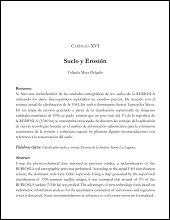Population Dynamics of Benthic-Epiphytic Dinoflagellates on Two Macroalgae From Coral Reef Systems of the Northern Mexican Caribbean
Autor
Elda Damaris Irola Sansores
BENJAMIN DELGADO PECH
ERNESTO GARCIA MENDOZA
Erick Julián Núñez Vázquez
ARAMIS OLIVOS ORTIZ
Antonio Almazán Becerril
Metadatos
Mostrar el registro completo del ítemResumen
"In the present study the abundance of epiphytic dinoflagellates was evaluated at two coral reef sites of the natural protected areas, Arrecife de Puerto Morelos and Isla Contoy, located in the northern Mesoamerican Reef System of the Mexican Caribbean. Abundances were monitored from April to December, 2015 on two genera of macroalga belonging to different functional groups: Dictyota and Amphiroa. In general, the tota abundance of dinoflagellates was higher in Puerto Morelos on both macroalgae. Ostreopsis cf. marina and O. heptagona were the dominant species. Relative abundance of these species varied from 8 to 99% of total epiphytic dinoflagellates. Maximum abundances at Puerto Morelos were registered in April, with 33,801 cells·g−1 on Dictyota and 6,264 cells·g−1 on Amphiroa. In Isla Contoy the maximum abundance was 16,006 cells·g−1 and it was detected on Dictyota during December. Other dinoflagellate genera were more abundant during the warmer period (May–September) in both locations. Prorocentrum was the second most abundant genus and was represented by six species (P. hoffmannianum, P. lima, P. belizeanum, P. elegans, P. emarginatum, and P. rathymum). The maximum pooled abundance of Prorocentrum species was 4,144 cells·g−1 on Dictyota in August. Coolia spp. did not reach abundances higher than 1,000 cells·g−1 and Gambierdiscus spp. only exceeded 100 cells·g−1 during August. Mean water temperature in Isla Contoy was significantly lower than that of Puerto Morelos during the entire study period. There was a negative correlation between the water temperature and the abundance of O. cf. marina. The dominance of Ostreopsis in the Caribbean is significant because of its capability to produce palytoxin analogs and its potential role in ciguatera fish poisoning outbreaks in the region. This is the first study that reports blooms of Ostreopsis in Mexican Caribbean coral reefs, a fact that emphasizes the significance of this genus at global scale."
Colecciones
Ítems relacionados
Mostrando ítems relacionados por Título, autor o materia.
-
PROMOCIÓN DEL PERIFITON PARA EL CULTIVO DE CAMARÓN BLANCO: HACIA UNA ACUICULTURA ECOLÓGICA
DOMENICO VOLTOLINA LOBINA; JUAN MANUEL AUDELO NARANJO; MARIA DEL ROSARIO PACHECO MARGES -
Suelo y Erosión
YOLANDA LOURDES MAYA DELGADO

